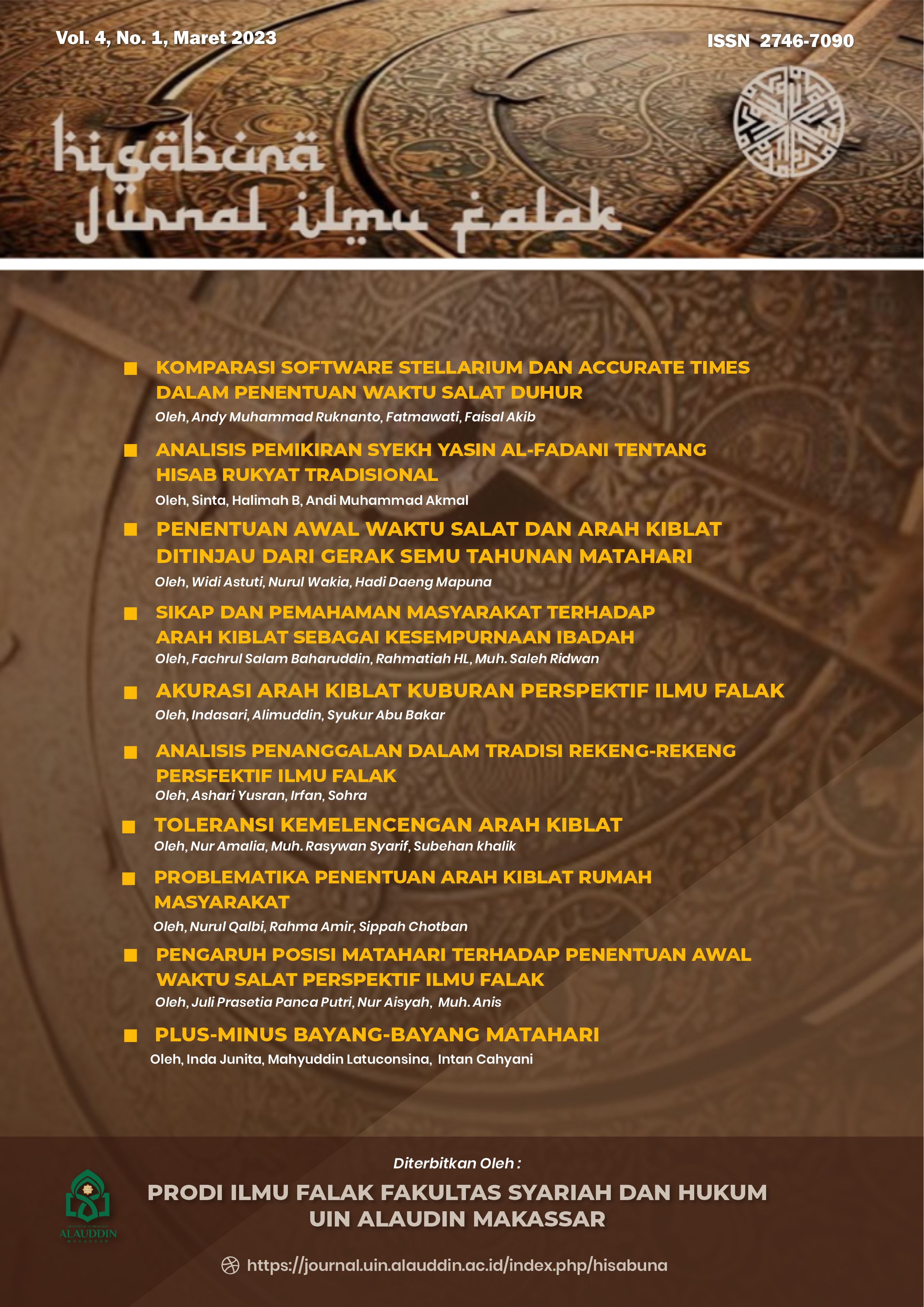PENENTUAN AWAL WAKTU SALAT DAN ARAH KIBLAT DITINJAU DARI GERAK SEMU TAHUNAN MATAHARI
Abstract
The main problem of this research is how is the existence of the apparent annual motion of the sun in determining prayer times and Qibla direction (astronomical perspective)? What is the sub-problem of the concept of the daily and annual apparent motion of the sun? and the implementation of the sun's annual apparent motion in determining the beginning of prayer times and Qibla direction?. This study uses the Library Research method, the syar'i approach and astronomy. The research results show that changes in the position of the sun cause differences in the length of day and night and affect prayer times. The difference in prayer times that changes significantly occurs when the sun's position is in the opposite direction, that is, when the sun's position is on the equinox and the equinox. Unlike the case for areas around the equator, the difference in prayer times does not change significantly. Meanwhile, determining the direction of the Qibla by the apparent annual motion of the sun, where the phenomenon when the sun culminates over the Kaaba or known as the Rashdul Qibla event which occurs on the 27th and 28th of May as well as the 15th and 16th July with the Qibla shadow can be determined at 17:18 and 17:27 WITA which occur every year. These two things prove that the apparent motion of the sun is very influential in determining the accurate start of prayer times and Qibla direction
Copyright (c) 2023 WIDI ASTUTI, Nurul Wakia, Hadi Daeng Mapuna

This work is licensed under a Creative Commons Attribution-NonCommercial 4.0 International License.


